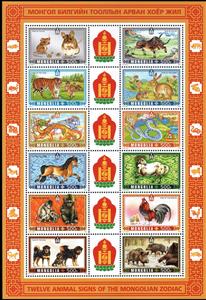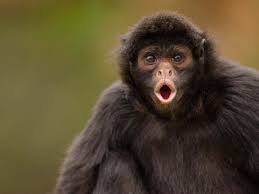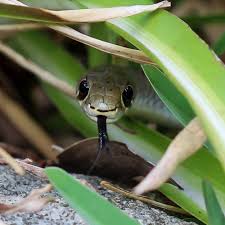Mini Sheet: Lunar New Year Cycle Mini Sheet (Mongolia 2025)
Lunar New Year Cycle Mini Sheet (Mongolia 2025)
17 January (Mongolia ) within release Year of the Snake 2025 goes into circulation Mini Sheet Lunar New Year Cycle Mini Sheet face value 12*500 Mongolian tögrög
| Mini Sheet Lunar New Year Cycle Mini Sheet in catalogues | |
|---|---|
| Colnect codes: | Col: MN 2025.01.17-02 |
Mini Sheet is square format.
stamps n sheet dated 2025Also in the issue Year of the Snake 2025:
- Stamp - Dogs face value 500;
- Stamp - Dragon face value 500;
- Stamp - Horse face value 500;
- Mini Sheet - Lunar New Year Cycle Mini Sheet face value 12*500;
- Stamp - Monkey face value 500;
- Stamp - Ox face value 500;
- Stamp - Rabbit face value 500;
- Stamp - Rats face value 500;
- Stamp - Rooster face value 500;
- Stamp - Sheep face value 500;
- Stamp - Snake face value 500;
- Stamp - Tigers face value 500;
- Stamp - Wild Pigs face value 500;
- Se-tenant - Year of the Snake 2025 face value 2*1500;
- Stamp - Year of the Snake 2025 face value 1,500;
- Stamp - Year of the Snake 2025 face value 1,500;
- Full Pane - Year of the Snake 2025 face value 10*1500;
Mini Sheet Lunar New Year Cycle Mini Sheet it reflects the thematic directions:
Chinese New Year or the Spring Festival (see also § Names) is a festival that celebrates the beginning of a new year on the traditional lunisolar Chinese calendar. Marking the end of winter and the beginning of spring, observances traditionally take place from Chinese New Year's Eve, the evening preceding the first day of the year, to the Lantern Festival, held on the 15th day of the year. The first day of Chinese New Year begins on the new moon that appears between 21 January and 20 February
The domestic dog (Canis lupus familiaris or Canis familiaris) is a member of genus Canis (canines) that forms part of the wolf-like canids, and is the most widely abundant carnivore. The dog and the extant gray wolf are sister taxa, with modern wolves not closely related to the wolves that were first domesticated. The dog was the first domesticated species and has been selectively bred over millennia for various behaviors, sensory capabilities, and physical attributes. Their long association with humans has led dogs to be uniquely attuned to human behavior and they are able to thrive on a starch-rich diet that would be inadequate for other canid species. Dogs vary widely in shape, size and colours. Dogs perform many roles for people, such as hunting, herding, pulling loads, protection, assisting police and military, companionship and, more recently, aiding handicapped individuals. This influence on human society has given them the sobriquet "man's best friend".
A dragon is a magical legendary creature that appears in the folklore of multiple cultures worldwide. Beliefs about dragons vary considerably through regions, but dragons in Western cultures since the High Middle Ages have often been depicted as winged, horned, and capable of breathing fire. Dragons in eastern cultures are usually depicted as wingless, four-legged, serpentine creatures with above-average intelligence. Commonalities between dragons' traits are often a hybridization of feline, reptilian, mammalian, and avian features. Some scholars believe large extinct or migrating crocodiles bear the closest resemblance, especially when encountered in forested or swampy areas, and are most likely the template of modern Asian dragon imagery
Monkey is a common name that may refer to most mammals of the infraorder Simiiformes, also known as simians. Traditionally, all animals in the group now known as simians are counted as monkeys except the apes. Thus monkeys, in that sense, constitute an incomplete paraphyletic grouping; however, in the broader sense based on cladistics, apes (Hominoidea) are also included, making the terms monkeys and simians synonyms in regard to their scope.
Snakes are elongated, limbless reptiles of the suborder Serpentes Like all other squamates, snakes are ectothermic, amniote vertebrates covered in overlapping scales. Many species of snakes have skulls with several more joints than their lizard ancestors, enabling them to swallow prey much larger than their heads (cranial kinesis). To accommodate their narrow bodies, snakes' paired organs (such as kidneys) appear one in front of the other instead of side by side, and most have only one functional lung. Some species retain a pelvic girdle with a pair of vestigial claws on either side of the cloaca. Lizards have independently evolved elongate bodies without limbs or with greatly reduced limbs at least twenty-five times via convergent evolution, leading to many lineages of legless lizards. These resemble snakes, but several common groups of legless lizards have eyelids and external ears, which snakes lack, although this rule is not universal (see Amphisbaenia, Dibamidae, and Pygopodidae).






